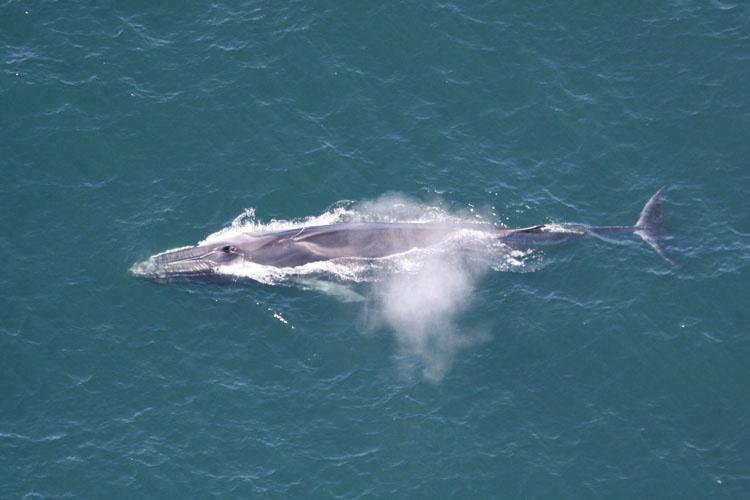After diving into the genomes of North Atlantic blue whales, scientists have found that the population is infused with a significant amount of hybrid DNA due to interbreeding with fin whales. Furthermore, it appears that blue whales are interbreeding with the blue-fin hybrids, adding a further twist to this genetic cocktail.
In the new study, scientists studied the genomes of dozens of North Atlantic blue whales, including individuals from the present day and historical museum collections. On average, they found that around 3.5 percent of the North Atlantic blue whale’s genome came from fin whales as a result of interbreeding.
Blue whales are a species of baleen whale that can reach lengths of 33 meters (108 feet), making them the largest-known animal to have ever existed on Earth. North Atlantic blue whales have been decimated by whaling over the past few centuries and they are still considered to be highly endangered. Current estimates suggest there are 4,000 to 5,000 blue whales in the whole eastern North Atlantic basin. Other populations exist elsewhere, but their numbers still haven’t bounced back to pre-modern levels.
Fin whales, the second-longest cetacean on Earth, also belong to the baleen whale family and can measure up to 26 meters (85 feet).

Spot the difference: this image shows a fin whale coming to the sea surface for air.
Image credit: NOAA Fisheries
Hybridization between the two species has been documented before. As the study notes, this is fairly remarkable since the pair diverged from each other on the evolutionary family tree around 8.35 million years ago. However, the true scale of the interbreeding was previously unclear.
The new study also suggested that the blue-fin whale hybrids are fertile and capable of producing their own offspring. You might have been taught at school that two different species cannot interbreed and create fertile offspring, but there are many exceptions to that rule – including these whale hybrids.
Oddly, the gene flow was found to be unidirectional from fin whales to blue whales. In other words, the blue whale population is being diluted with fin whale DNA, but not the other way around.
Mark Engstrom, study co-author and an ecological geneticist at the University of Toronto, told Live Science that it’s unclear why this is the case. However, he explained that it may be because there are higher numbers of fin whales in the North Atlantic than blue whales.
Promisingly, the analysis found that blue whale populations in the North Atlantic seem to have very little inbreeding. However, the level of hybridization is slightly concerning. If blue whale populations continue to interbreed with fin whales, they run the risk of losing some genetic variability.
“Hybridization of blue whales with fin whales appears frequent in the NA [North Atlantic] and future rates of hybridization should be monitored. While genetic variability in NA blue whales is high, this is likely due to the recency of the bottleneck and the species long generation time, since it takes time to see the impact of population reduction on the genomes,” the study authors write.
“If blue whale populations do not increase from their current low levels, reduction in heterozygosity probably will occur over time,” they add.
The study is published in the journal Conservation Genetics.
Source Link: Blue-Fin Whale Hybrids Are More Common Than We Thought. Turns Out, They Can Breed